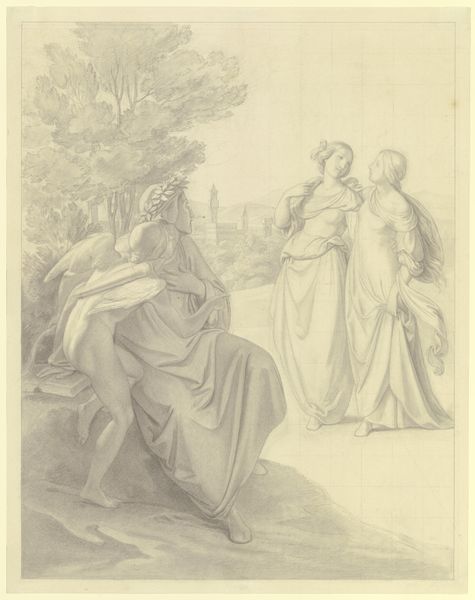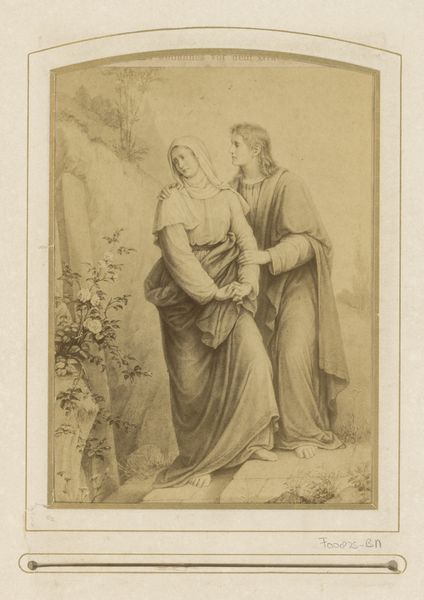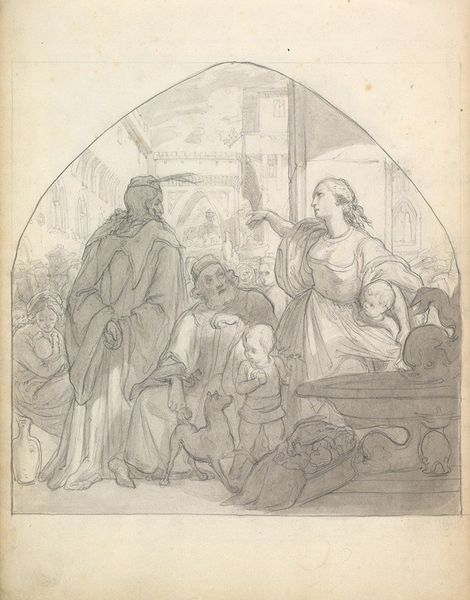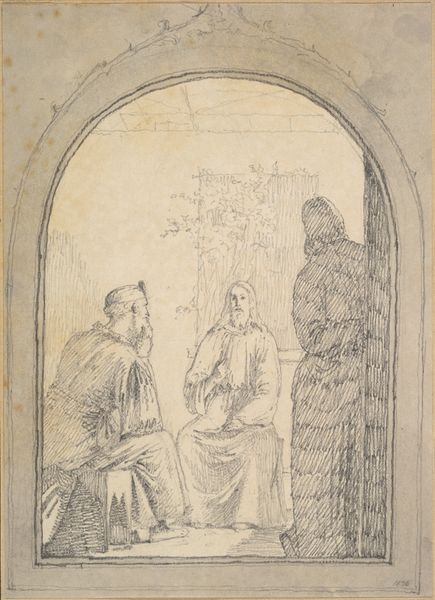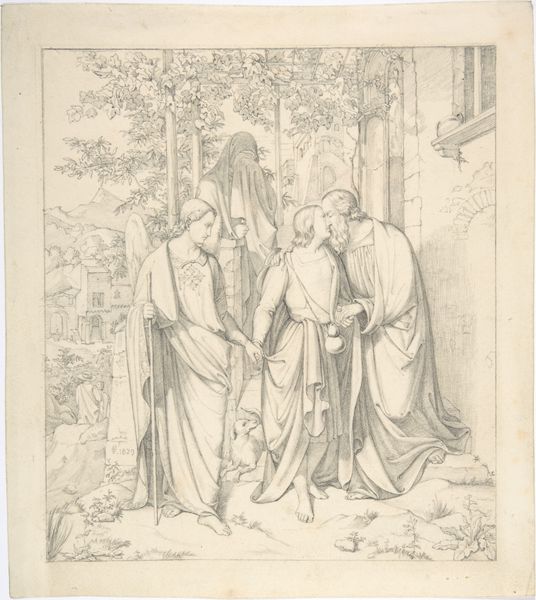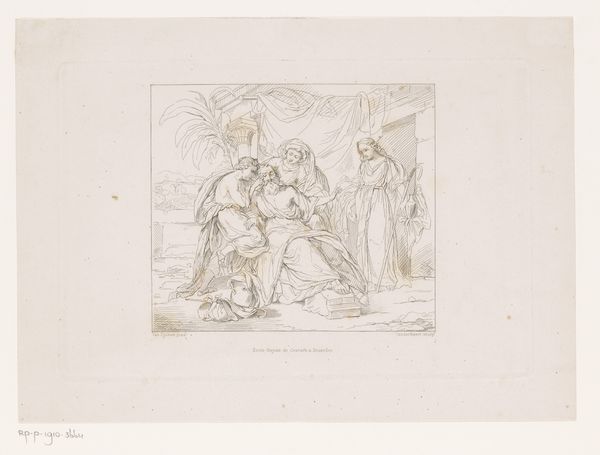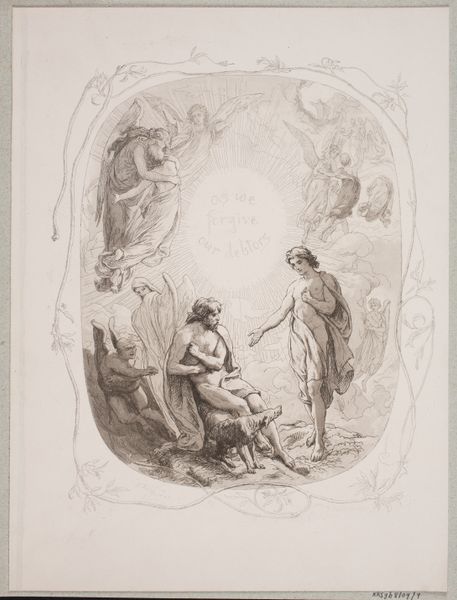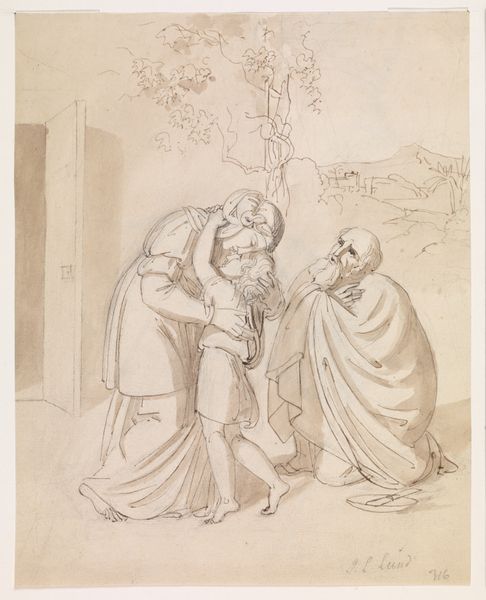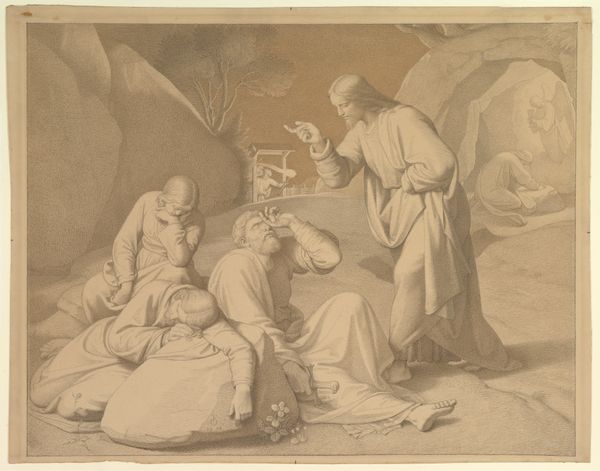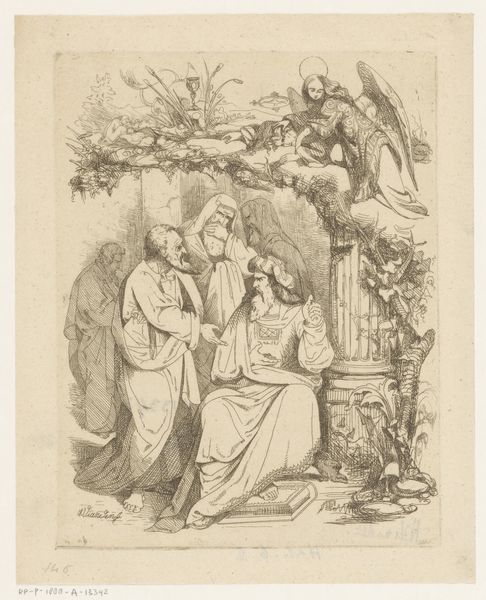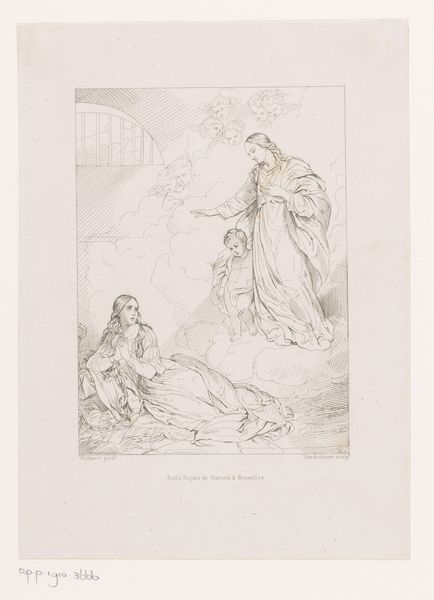
drawing, paper, pencil
#
portrait
#
drawing
#
figuration
#
paper
#
pencil drawing
#
romanticism
#
pencil
#
history-painting
#
academic-art
Dimensions: 400 mm (height) x 303 mm (width) (bladmål)
Editor: This is "The resurrected Christ appears to the women," a pencil drawing on paper by J.L. Lund from 1816. The scene feels very delicate and preliminary. What strikes you about it? Curator: Looking at the materials and production, the choice of pencil and paper immediately softens what could be a grand historical scene. Consider the social context: in 1816, would Lund have seen this as a study, a private devotion, or a challenge to the dominance of oil painting and large-scale history painting as *the* media of significance? Editor: I see. So the very act of choosing pencil elevated the status of drawing, right? But I always assumed that pencil drawing on paper was meant to be 'less than' painting. Curator: Precisely! Lund's labor here and the relatively accessible materials point towards a possible shift in artistic value. Was it commentary on how religious scenes were mass-produced? Is there perhaps a democratic approach to devotional imagery? Editor: Interesting. It wasn't intended as a reproducible artwork, and there are no signs of engraving preparation. Still, what do we make of his specific artistic choices in the composition and the historical context? Curator: Considering that Romanticism emphasized emotional connection and individuality, could this drawing invite a more personal interaction with the divine than a grand altarpiece might? By utilizing accessible materials, he is connecting not just to academic ideals but the labour necessary to make something resonate more intimately, shifting it into the realm of craft. What does that consideration make you think about this image? Editor: Now, I think that focusing on materials as much as subject connects it to wider shifts happening then; the industrial revolution, ideas around artistic labour and production... thanks, I see how focusing on materials really changes how we view the image! Curator: Exactly. By understanding how art objects are created, distributed, and received, we discover how those choices impact social and cultural values, in both their own historical moment and ours.
Comments
No comments
Be the first to comment and join the conversation on the ultimate creative platform.

